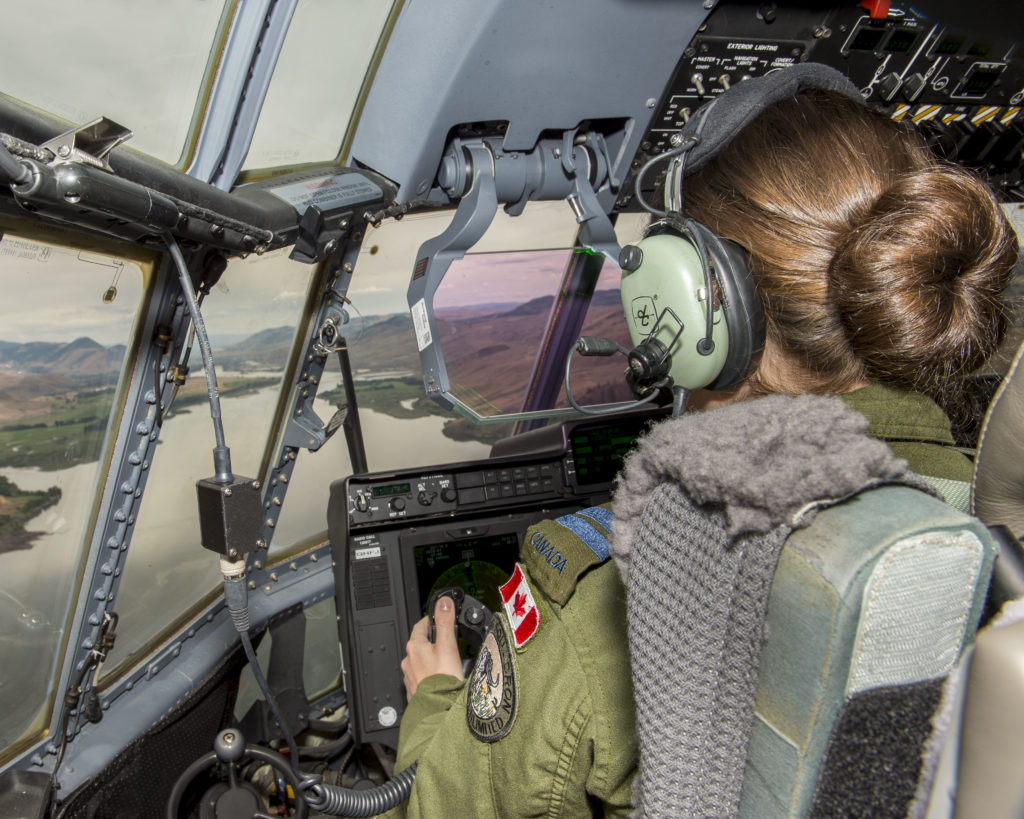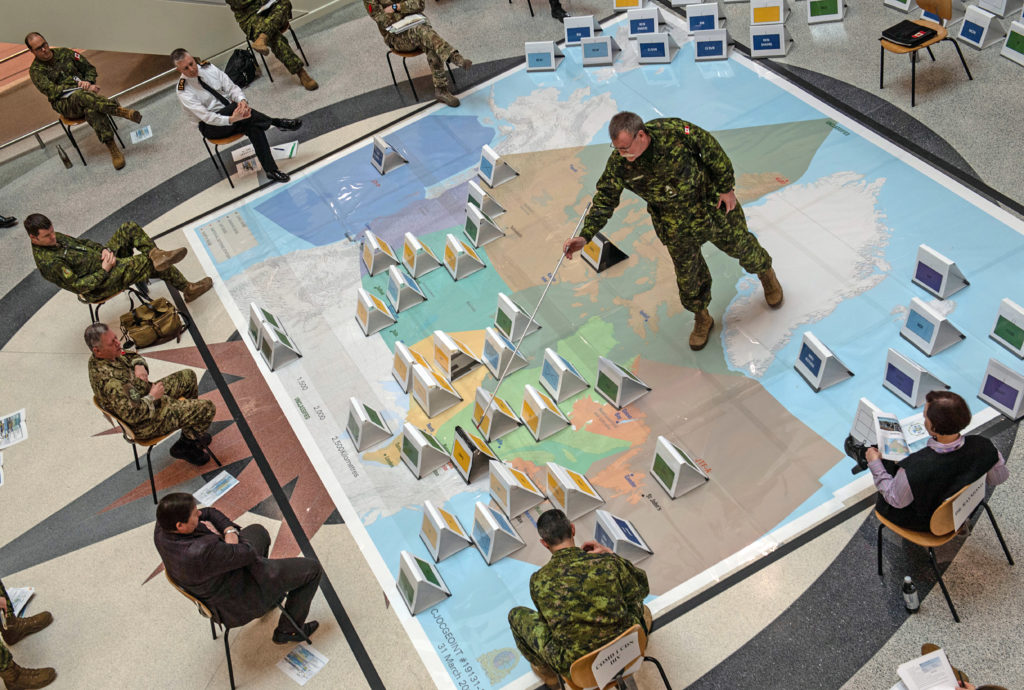Estimated reading time 8 minutes, 42 seconds.
Over several days beginning on Saturday, Mar. 28, the Royal Canadian Air Force (RCAF) employed a CC-130J Hercules, CC-150 Polaris and CP-140 Aurora to airlift 638 military personnel home from training schools and staff colleges.

The 10 flights crisscrossed the country, from Gander, N.L., to Halifax, N.S., Trenton, Ont., Winnipeg, Man., Edmonton, Alta., and Abbotsford, B.C, all in an effort to reduce the risk of exposure to the coronavirus for Canadian Armed Forces (CAF) members on routine and academic training.
While those members still had to self-isolate for 14 days, repositioning personnel has been one of several measures taken in recent weeks to mitigate the spread of COVID-19 within the Air Force, even as it continues to conduct operations around the world and positions itself to respond to possible calls for assistance.
“There’s no doubt that air and space power will be a critical CAF enabler within any whole-of-government response to the COVID-19 pandemic or [domestic] scenarios such as forest fires, floods, or the delivery of humanitarian aid,” said BGen Eric Kenny, the director general for an RCAF COVID-19 Strategic Response Team, in response to written questions from Skies.
“We have declared a sizeable RCAF force package to Canadian Joint Operations Command to enable a more agile and timely response to future missions. Should the need arise, local response forces at our Wings may be generated to support additional tasks in support of these domestic operations. We are poised to respond.”
That includes an effort currently underway to position a large number of Air Reservists to add capacity to any potential response.
“Today, the RCAF team is at a level of readiness not seen in recent memory,” said Kenny, noting that over 83 per cent of personnel are now working from home but on short notice to activate. “This is no small feat and it is due to the entire RCAF team – our military members, public service employees, and of course our families – who have shown unwavering dedication and discipline under these challenging circumstances.”

Kenny’s strategic response team was created on Mar. 23 by LGen Al Meinzinger, RCAF commander, to provide a “dedicated planning and coordination capability” for the Air Force COVID-19 response and to manage and coordinate support to Operations Laser and Lentus, the CAF responses to the pandemic and to domestic disaster assistance, respectively. Like the rest of the RCAF, however, many of the response team staff are working remotely, relying primarily on teleconferences and other electronic means to communicate and plan.
It’s a common pattern not only at RCAF headquarters in Ottawa and 1 Canadian Air Division in Winnipeg, but also at Wings and Squadrons. Board rooms that previously would have been standing room only for key meetings now feature just a handful of core staff “with at least two-metre spacing between each person, with the rest joining by teleconference either from their offices or from home.”
At Wings, those personnel not working remotely are practising physical distancing as much as possible and frequently handwashing and cleaning equipment and surfaces. The RCAF has also taken the advice of the Public Health Agency of Canada and is now mandating members wear non-medical masks “when unable to maintain a two-metre physical distance from others due to the type of work they conduct,” he said.
While the top priority is to “minimize and mitigate the impacts of widespread transmission of COVID-19,” the Air Force continues to support CAF operations in Iraq, Latvia, Ukraine, and elsewhere, transporting essential personnel and equipment. Some missions have been temporarily paused and reduced in size – notably Op Impact in Iraq and others in the Middle East – and personnel and equipment have been redeployed to Canada. But the operations must still be sustained with air transport.
Aircrew have been instructed to practice physical distancing “to the extent possible,” he said, but other measures have been adopted to “increase protection” in cockpits and cargo areas.
When possible, flight routes are being changed to avoid COVID-19 hot spots around the world. Aircrew and passengers are completing pre-flight medical screening questionnaires – anyone potentially exposed is barred from boarding – personal equipment like headsets is being cleaned more frequently and clothing and gloves are being laundered post-flight.

If an aircraft is transporting patients who are not in bio-containment, all aircrew will be mandated to adopt more enhanced measures, including wearing fitted N-95 masks and eye shields such as visors or ballistic eyewear. Aircraft will be disinfected following each flight.
“The RCAF is taking every precaution to ensure the health and safety of our aviators, while ensuring we are able to continue core missions at home and abroad,” said Kenny. “We are leveraging best practices from the airline industry and from our allies.”
Though the goal is to ensure personnel, resources, and equipment are at high readiness, he confirmed that “only essential core activities will continue at this time,” meaning a temporary pause to most training activity.
How long that will last is “flexible,” he stated. The RCAF needs to maintain a high level of readiness. Training for critical functions such as NORAD quick reaction alert, air mobility, and search and rescue is still going ahead. But upcoming international training and exercises in the United States – for units such as tactical aviation preparing for global deployment in the coming year – have been cancelled or delayed “on a case-by-case basis” until further notice.
“Some tailored training at Operational Training Units as well as the minimum required force generation (training activities) at our operational units must carry on to maintain the minimum level of proficiency and currency requirements,” said Kenny.
“These activities are essential to ensure that our air crews remain able to do their jobs safely and remain ready to perform key functions for Canada.”








